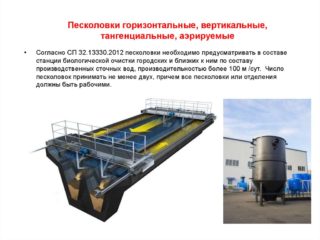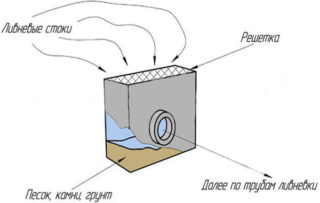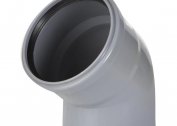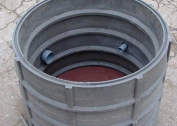The sand trap helps to remove dirt and suspended matter from storm sewers after passing through the filter grate of the storm water inlet. Such devices are made of concrete, polymer concrete and plastic. Installing a sand trap will allow you to quickly clean the water from pollution and protects sewer pipes from blockages.
Purpose and principle of operation
A sand trap is a closed container, which consists of a receiver on top, a bottom, pipes on the sides for connecting pipes and a grill. It is an important unit of storm sewers: it collects water from the surface and transfers it after further cleaning along the highways.
The principle of operation of the sand trap is based on the force of gravity.
From the very beginning, water is transmitted to the receivers very quickly and under high pressure, but when it suddenly falls into a wide tank, it loses the flow velocity. This leads to the fact that the flow force is reduced in comparison with the force of gravity. As a result, large impurities are retained and deposited in the tank. Clay suspension, grains of sand and other debris settle to the bottom of the sand trap. At the same time, the flow of water through sewage pipes does not stop.
From the sand collector, the liquid passes to the collector device, coming through the drainage channels, due to which up to 80% of solid impurities settle in it. Water becomes almost purified, therefore, storage devices and pipes of the drainage system do not clog, and no blockages form in them.
Varieties of sand traps for stormwater
 Structurally, devices are divided into four types:
Structurally, devices are divided into four types:
- Vertical. Usually available in the form of an elongated cylinder. Water-insoluble impurities independently settle to the bottom, and water, freed from solid particles, flows further through the outlet pipe. A distinctive feature is the large tank capacity. They are used for the most part at industrial facilities.
- Horizontal The design is installed parallel to the soil surface and consists of two parts. In the first, water freely circulates in the forward or circular direction, and in the second part precipitation occurs. This is one of the most popular types of sedimentation tanks, which is used everywhere, including in personal plots.
- Tangential. Devices are round in shape, with the addition of water tangentially. In it, the incoming water is twisted, and a variety of suspensions under the action of centrifugal force are thrown onto the walls of the chamber. From there, they settle to the bottom under their own weight. A similar type of sand collectors is quite common in European countries, but has not gained popularity in Russia.
- Aerated. Installations are often used in the food industry, where the water entering the drain has a high percentage of fat content. Inside such a sand collector from sewage, an aerator passes, which fills the water with oxygen. This process allows for the intensive friction of grains of sand with each other and a more effective purification of the liquid. Water is also better cleaned of fat impurities that trap and carry solid particles to the bottom.
The choice of installation depends on the individual characteristics of the backbone networks.
Features of installation and cost of devices
 The correct installation of the sand box has a direct impact on its performance. It is necessary to act in stages:
The correct installation of the sand box has a direct impact on its performance. It is necessary to act in stages:
- Determine the installation location. It is mounted on the direct transition from drains to sewer pipes. It must be remembered that at first sand traps are installed, and then primary sedimentation tanks and storm water inlets.
- Prepare the pit. Its dimensions should slightly exceed the dimensions of the sand collector. The bottom is poured with concrete - this is necessary to firmly fix the cleaning device so that it does not warp during operation. After setting the concrete mixture, a sand cushion is poured onto the base to further protect the installation from the negative effects of the soil.
- Fix the fixture on the concrete surface with bolts. Slam the sand trap gratings and check the strength of their closure.
- Connect to the input and output channels of the storm sewer system.
Further, the pit is not completely sprinkled with soil and the rest of the storm is mounted.
The prices of sand traps for storm sewers range from 1,100 to 28,000 rubles. They depend on the configuration, material, size and configuration of the unit. Citywide storms require more powerful and more expensive sand collectors. For a personal plot, an inexpensive plastic device, for example, the Hydrolika company, is enough, the price of which starts at 1100 rubles for a single-section model and from 4400 rubles for a multi-section one.
The correct choice and installation of the unit guarantees the reliability of the protection of the sewer system from various types of blockages.



